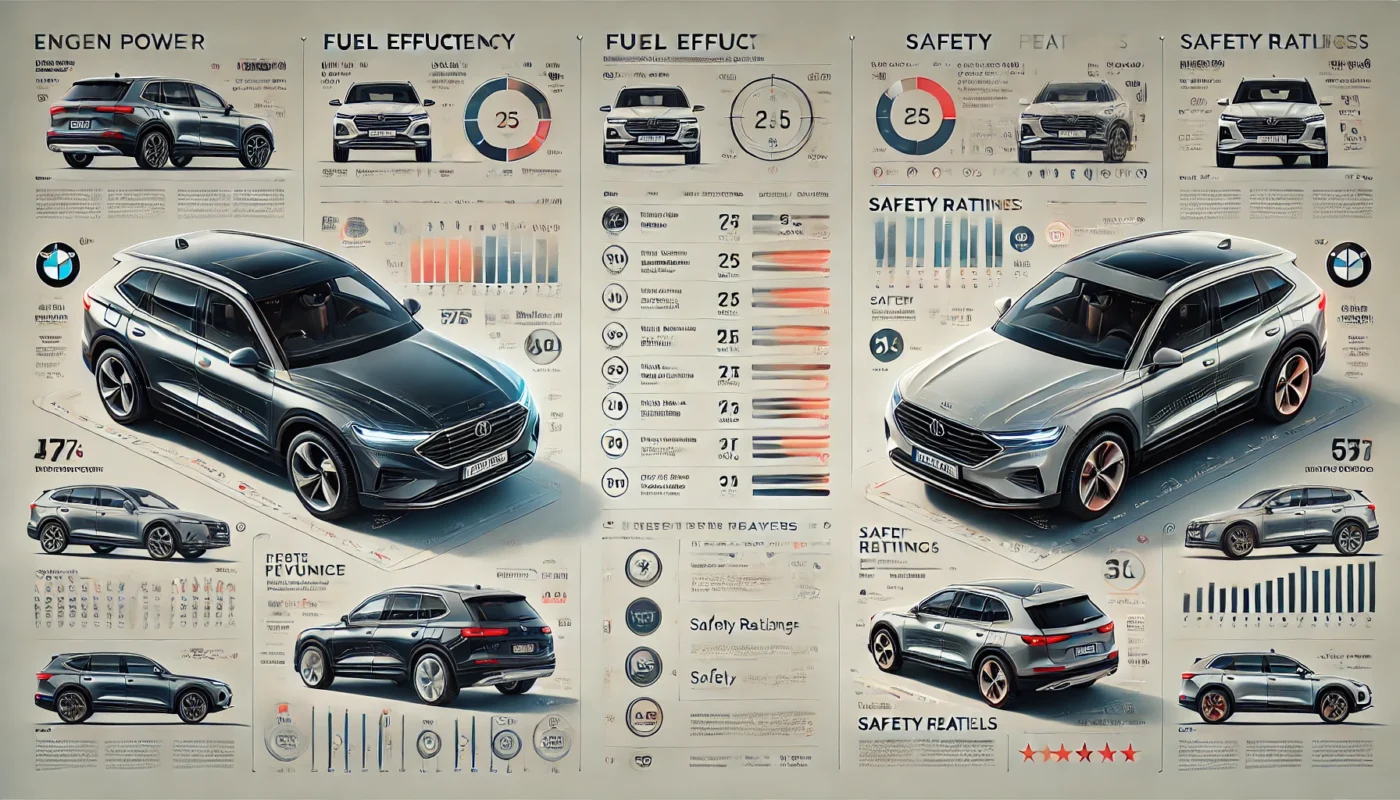Choosing the right car involves more than just liking a model’s look or its brand reputation. To make a fully informed decision, it’s essential to understand how to compare car features and specs using reviews effectively. This guide provides expert insights on understanding car specifications, deciphering review jargon, and comparing features across models to help you find a car that truly fits your needs.
Understanding the Importance of Car Reviews for Feature Comparison
Car reviews offer a wealth of information, typically compiled by experts or everyday users, giving insights that go beyond the specifications alone. They help highlight real-world performance, long-term reliability, comfort, and handling, which can significantly impact your satisfaction with a vehicle.
Reading car reviews lets you understand:
- How specific features impact the driving experience.
- Practical pros and cons of different models.
- Insights into maintenance, fuel efficiency, and long-term durability.
By learning to interpret these reviews, you can make comparisons that go beyond numbers and specs, enabling a more comprehensive and satisfying purchase.
Key Specifications to Consider in Car Comparisons
Before diving into reviews, familiarize yourself with the key specs that define a car’s performance, safety, and comfort. Below are some critical aspects you should focus on when comparing car features:
Engine Power and Performance
Engine specifications, including horsepower, torque, and engine size, are foundational in understanding a car’s performance potential. Reviews often break down the engine’s strengths, such as acceleration, power delivery, and responsiveness in real-world driving scenarios.
Fuel Efficiency
Fuel efficiency, measured in miles per gallon (MPG), affects long-term cost and environmental impact. Reviews often discuss real-life fuel efficiency, helping you see how different cars perform in various conditions (city vs. highway).
Safety Features and Ratings
Advanced safety features like adaptive cruise control, lane departure warning, and emergency braking are increasingly common. Reviews discuss the effectiveness and reliability of these features, and safety ratings from agencies like the National Highway Traffic Safety Administration (NHTSA) or Insurance Institute for Highway Safety (IIHS) add a layer of credibility.
Interior Comfort and Quality
Interior materials, space, and layout significantly affect the comfort of a vehicle. Reviews cover these aspects in detail, allowing you to see how comfortable the car feels on long trips or daily commutes.
Infotainment and Connectivity
From touchscreen size to smartphone compatibility, infotainment systems vary widely among vehicles. Reviews highlight how user-friendly and reliable these systems are, which can be especially helpful if you value in-car tech.
Cargo Space and Utility
If you need a car for family outings or heavy cargo, understanding the storage and seating arrangement is crucial. Reviews often point out how easy it is to load cargo, configure seats, or access storage compartments.
Deciphering Review Terminology: What to Watch For
Reviews contain terminology that can be confusing if you’re unfamiliar with the lingo. Here’s a breakdown of common terms and what they mean in the context of car features:
- Understeer/Oversteer: These terms refer to how the car responds to steering inputs. Understeer means the car turns less than expected, while oversteer means it turns more.
- Turbo lag: A delay between pressing the accelerator and feeling power from the turbocharger. Minimal turbo lag usually indicates smoother acceleration.
- Drivetrain: The arrangement that sends power to the wheels. Options include front-wheel drive (FWD), rear-wheel drive (RWD), all-wheel drive (AWD), and four-wheel drive (4WD).
- Body roll: The car’s tendency to lean to the side during sharp turns. Low body roll often means better handling.
- NVH (Noise, Vibration, Harshness): Reviews often evaluate NVH to indicate how quiet and smooth the car is, contributing to comfort levels.
Steps to Compare Car Features Using Reviews
Comparing car features using reviews involves a systematic approach to ensure all critical aspects are considered. Here’s how to approach it step-by-step:
Step 1: Identify Your Priorities and Requirements
Different cars are built for different needs. Start by determining what matters most to you:
- Are you looking for fuel efficiency, luxury, or high performance?
- Do you prioritize safety, technology, or space?
Step 2: Collect Reviews from Trusted Sources
Look for reviews from reputable automotive websites, publications, or video channels. Sources like Edmunds, Kelley Blue Book, Car and Driver, and Consumer Reports are known for unbiased and detailed reviews.
Step 3: Compare Specifications Across Models
Using review summaries, focus on the specs that align with your priorities. For example:
- If safety is a priority, check how each model scores on crash tests and what safety features reviewers praise.
- For performance, look at horsepower, acceleration times, and handling.
Step 4: Analyze Real-World Performance Feedback
Real-world performance reviews provide insights into how the car behaves in everyday scenarios. These details can be particularly useful for features like handling, braking, and comfort, where specs alone may not reveal the full picture.
Step 5: Read User Reviews and Long-Term Tests
While expert reviews offer valuable insights, user reviews and long-term tests provide additional perspectives on reliability, durability, and satisfaction after extended ownership.
Step 6: Make a Pros and Cons List
After reading multiple reviews, create a pros and cons list for each model based on what you’ve learned. This approach can help clarify which vehicle has the features that best match your needs.
Tools and Resources to Simplify Car Comparison
Utilizing online tools and resources can streamline your comparison process. Websites often have dedicated comparison tools that allow side-by-side evaluations of specifications and features. Here are a few top resources:
- Edmunds Car Comparison Tool: Easily compares specs like engine performance, MPG, and interior details for up to four cars.
- Kelley Blue Book (KBB): Provides insights on pricing, specifications, and customer reviews.
- Consumer Reports: A subscription-based resource offering in-depth reviews and reliability ratings.
You Can Also Read : How to Compare Car Models & Variants Before You Buy
Common Pitfalls in Car Feature Comparison
When comparing car features, there are common pitfalls to avoid:
- Ignoring Real-World Performance: A car’s specifications don’t always translate to real-world driving. Reviews help you avoid surprises in actual use.
- Overlooking Maintenance and Reliability: Reliability scores and maintenance costs are essential for long-term ownership satisfaction.
- Prioritizing Looks Over Practicality: While design is important, focusing too much on aesthetics can lead to missing essential features.



